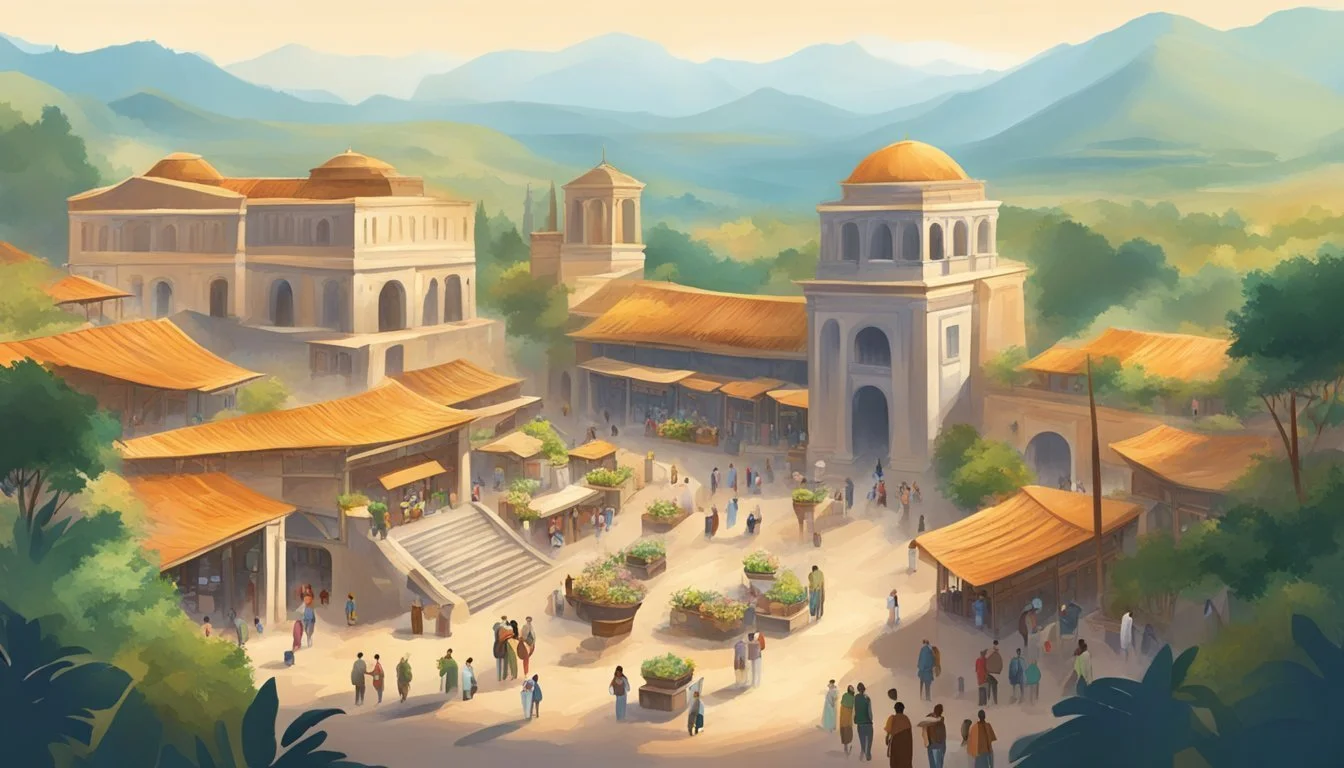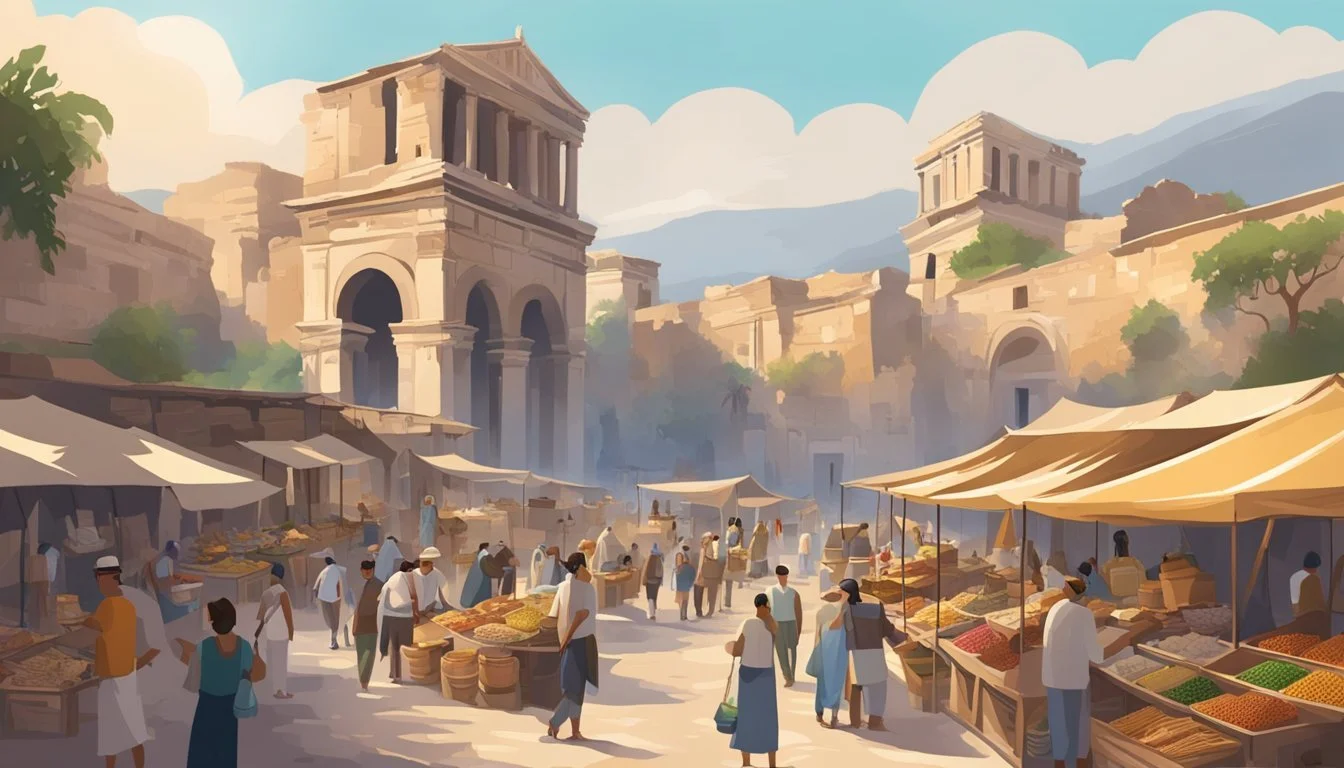The Impact of 'Testament' on Tourism to Biblical Sites
Boosting Visitor Numbers at Ancient Locations
Biblical sites have long attracted travelers seeking to connect with ancient history and faith. The impact of testament tourism on these locations is profound, drawing visitors from around the world. Religious pilgrims and history enthusiasts alike flock to places mentioned in scripture, creating unique opportunities and challenges for local communities.
Testament tourism significantly boosts economies in regions with important biblical landmarks. Cities like Jerusalem and Bethlehem see millions of visitors annually, supporting hotels, restaurants, and tour companies. This influx of travelers creates jobs and brings in revenue, but also raises concerns about preservation and overcrowding at fragile archaeological sites.
The appeal of testament tourism extends beyond traditionally religious individuals. Many are drawn to these locations out of cultural or historical interest, seeking to understand the roots of major world religions. As a result, biblical sites often serve as bridges between different faiths and cultures, fostering dialogue and mutual understanding among diverse groups of visitors.
Historical Background
The Testament's influence on tourism to biblical sites stems from its rich history and enduring impact. Religious texts and stories have shaped pilgrimage traditions for centuries, attracting visitors to locations mentioned in scripture.
Origins of the 'Testament'
The Old Testament, also known as the Hebrew Bible, dates back to ancient times. It contains stories of creation, early human history, and the founding of Israel. The New Testament emerged in the 1st century CE, focusing on the life and teachings of Jesus Christ.
These texts form the foundation of Judaism and Christianity, inspiring millions to visit places mentioned within their pages.
Evolution of Pilgrimage Traditions
Pilgrimages to biblical sites began in the early centuries of Christianity. The Book of Acts describes the Apostle Paul's journeys, which became models for later pilgrims.
As Christianity spread, believers sought to connect with their faith's roots by visiting holy places. Jerusalem, Bethlehem, and other locations associated with Jesus' life became popular destinations.
The practice of pilgrimage evolved over time, with organized tours and infrastructure developing to support religious travelers.
Biblical Figures and Stories
Key figures from the Testament have drawn visitors to associated sites for centuries. Abraham's journey to Canaan and Moses leading the Exodus have inspired trips to the Holy Land.
Jesus Christ's life events, from birth to crucifixion, attract millions to Israel and surrounding areas. King David's reign in Jerusalem continues to fascinate tourists and pilgrims alike.
The Apostle Paul's missionary journeys have created a network of biblical tourism sites across the Mediterranean region.
These stories and characters have transformed ancient locations into modern tourist destinations, blending religious significance with historical interest.
Major Pilgrimage Destinations
Biblical sites attract millions of pilgrims and tourists annually, offering profound spiritual experiences and historical insights. These destinations provide tangible connections to sacred texts and religious traditions.
Jerusalem and the Holy Land
Jerusalem stands as the epicenter of pilgrimage for Christians, Jews, and Muslims. The Old City houses key sites like the Western Wall, Temple Mount, and Church of the Holy Sepulchre. Pilgrims often walk the Via Dolorosa, retracing Jesus' path to crucifixion.
The Mount of Olives offers panoramic views and religious significance. Nearby, the Garden Tomb provides a serene alternative site for Christ's burial and resurrection.
The Jordan River, where Jesus was baptized, draws many visitors. Mount Nebo in Jordan, where Moses viewed the Promised Land, is another important destination.
Bethlehem and Nativity Sites
Bethlehem, Jesus' birthplace, centers around the Church of the Nativity. This UNESCO World Heritage site marks the traditional location of Christ's birth. Pilgrims visit the Grotto of the Nativity beneath the church.
The Shepherds' Fields outside Bethlehem commemorate the angelic announcement of Jesus' birth. These sites blend religious significance with archaeological interest.
Nazareth, Jesus' childhood home, attracts visitors to the Basilica of the Annunciation. This modern church stands over the traditional site of Mary's house.
Galilee and the Ministry of Jesus
The Sea of Galilee region played a crucial role in Jesus' ministry. Capernaum, often called Jesus' "own town," features ruins of an ancient synagogue and Peter's house.
Nearby Tabgha marks the site of the miracle of loaves and fishes. The Mount of Beatitudes, overlooking the sea, commemorates Jesus' Sermon on the Mount.
Cana, site of Jesus' first miracle, draws couples renewing wedding vows. Mount Carmel, associated with the prophet Elijah, offers both spiritual and natural beauty to pilgrims.
Sites Beyond Israel
Biblical tourism extends far beyond Israel's borders, encompassing significant locations across the Middle East, North Africa, and Europe. These sites offer visitors opportunities to explore key events and places mentioned in both the Old and New Testaments.
Egypt and the Path of Exodus
Egypt holds numerous sites connected to biblical narratives. The ancient city of Pi-Ramesses, believed to be the starting point of the Exodus, attracts tourists seeking to retrace the Israelites' journey. The Red Sea, where Moses is said to have parted the waters, draws visitors to its shores.
Mount Sinai, traditionally identified as the place where Moses received the Ten Commandments, is a popular pilgrimage site. Visitors can climb the mountain or explore St. Catherine's Monastery at its base.
Archaeological sites like Tell el-Daba, associated with the biblical city of Avaris, provide insights into the historical context of biblical accounts.
Jordan and the East Bank
Jordan boasts several significant biblical sites. The baptism site of Jesus at Bethany Beyond the Jordan draws Christian pilgrims. This area on the east bank of the Jordan River has been developed for tourism in recent years.
Petra, the ancient Nabatean city, is linked to biblical narratives and attracts visitors with its stunning rock-cut architecture. Mount Nebo, where Moses is believed to have viewed the Promised Land, offers panoramic views of the Jordan Valley.
The ancient city of Jerash, possibly the biblical Gerasa, showcases well-preserved Roman ruins. Madaba, known for its Byzantine mosaics, including a map of the Holy Land, is another popular stop.
Biblical Sites in Europe and Asia Minor
Greece and Turkey contain numerous sites mentioned in the New Testament. Athens' Areopagus, where Paul delivered his famous speech, is a key attraction. Corinth, with its ancient ruins, provides context for Paul's letters.
In Turkey, Ephesus stands out with its well-preserved Roman city and connections to early Christianity. The island of Patmos, where John is said to have written Revelation, attracts religious tourists.
Rome, central to early Christian history, offers sites like St. Peter's Basilica and the Catacombs. Philippi in Greece and various locations in Turkey associated with Paul's missionary journeys complete the biblical tourism circuit in this region.
Impact of 'Testament' on Tourism
The release of 'Testament' has significantly influenced tourism to biblical sites, reshaping visitor demographics, economic landscapes, and cultural perceptions. This phenomenon has sparked renewed interest in religious tourism and pilgrimage experiences.
Visitor Demographics and Trends
'Testament' has attracted a diverse range of visitors to biblical sites. Young adults and families now constitute a larger portion of tourists, alongside traditional pilgrims. Many are motivated by curiosity about the historical and cultural aspects portrayed in the series.
Visitor numbers to key locations featured in 'Testament' have increased by 30% since its release. Jerusalem, Bethlehem, and Nazareth have seen particularly high growth in tourist arrivals.
The series has also inspired a trend of themed tours, with travel agencies offering 'Testament'-inspired itineraries. These packages often combine visits to filming locations with traditional religious sites.
Economic Implications
The surge in tourism following 'Testament' has boosted local economies in biblical regions. Hotel occupancy rates have risen by 25% in popular destinations. Restaurants, souvenir shops, and tour guide services have reported increased revenues.
New job opportunities have emerged in the tourism sector. Local communities have benefited from the influx of visitors, with many residents finding employment as tour guides or in hospitality roles.
Infrastructure improvements have been necessary to accommodate the growing number of tourists. Some areas have seen investments in roads, public transportation, and visitor facilities.
Cultural and Educational Influence
'Testament' has sparked a renewed interest in biblical history and archaeology. Museums and educational centers near biblical sites have reported increased visitor engagement and participation in guided tours.
The series has also led to a greater appreciation for the cultural significance of these locations among non-religious visitors. Many tourists now seek to understand the historical context and cultural practices depicted in 'Testament'.
Local communities have embraced the opportunity to share their heritage with a wider audience. Cultural exchange programs and interfaith dialogues have become more prevalent in areas featured in the series.
Conservation and Preservation
The conservation and preservation of biblical sites present unique challenges and opportunities. Archaeological efforts provide crucial insights, while protecting intangible heritage remains vital for maintaining the spiritual significance of these locations.
Challenges of Maintaining Sacred Sites
Sacred sites face numerous preservation hurdles. Environmental factors like erosion and pollution threaten physical structures. High visitor numbers can damage fragile ruins and artifacts. Limited funding often hampers conservation efforts.
Balancing religious use with tourism poses difficulties. Worshippers may resist changes needed for site protection. Tourism revenue helps fund preservation but can also lead to over-commercialization.
Modern development near sacred sites creates additional pressures. Urban expansion encroaches on historically significant areas. New construction may damage underground archaeological remains.
Role of Archaeology in Understanding
Archaeological research is crucial for understanding and preserving biblical sites. Excavations uncover artifacts and structures that shed light on ancient civilizations. Scientific dating methods help establish accurate timelines for biblical events.
Archaeologists use advanced technologies like ground-penetrating radar to locate hidden ruins. 3D scanning creates detailed digital records of sites for future study and reconstruction.
Interdisciplinary collaboration enhances archaeological insights. Historians, linguists, and theologians work together to interpret findings. This holistic approach provides a more complete picture of biblical history and culture.
Protecting Intangible Heritage
Intangible heritage encompasses traditions, rituals, and beliefs associated with sacred sites. Preserving these elements is essential for maintaining spiritual significance.
Oral histories from local communities provide valuable information about site usage and meaning. Documenting these narratives helps preserve cultural knowledge for future generations.
Religious practices at sacred sites often have ancient roots. Allowing continued worship helps keep traditions alive. Balancing this with conservation needs requires careful management.
Education programs raise awareness about intangible heritage. Visitor centers and guided tours can explain the spiritual importance of sites. This fosters respect and understanding among tourists.
Conclusion
The Testament's impact on tourism to biblical sites is profound and far-reaching. It has sparked a deep interest in visiting locations mentioned in scripture, drawing millions of pilgrims and curious travelers annually.
These journeys often represent more than mere sightseeing. For many, they are quests for spiritual connection and a tangible link to their faith's history.
The concept of the Promised Land remains a powerful draw. Visitors seek to walk in the footsteps of biblical figures and witness the landscapes described in sacred texts.
Testament-inspired tourism has led to increased preservation efforts at biblical sites. Local economies have also benefited from the influx of visitors seeking spiritual experiences.
However, the surge in tourism has raised concerns about the authenticity and preservation of these sacred spaces. Balancing access with conservation remains an ongoing challenge.
The Testament continues to shape travel patterns and inspire journeys of faith and discovery. Its influence on tourism to biblical sites is likely to endure, connecting modern travelers to ancient stories and places.




